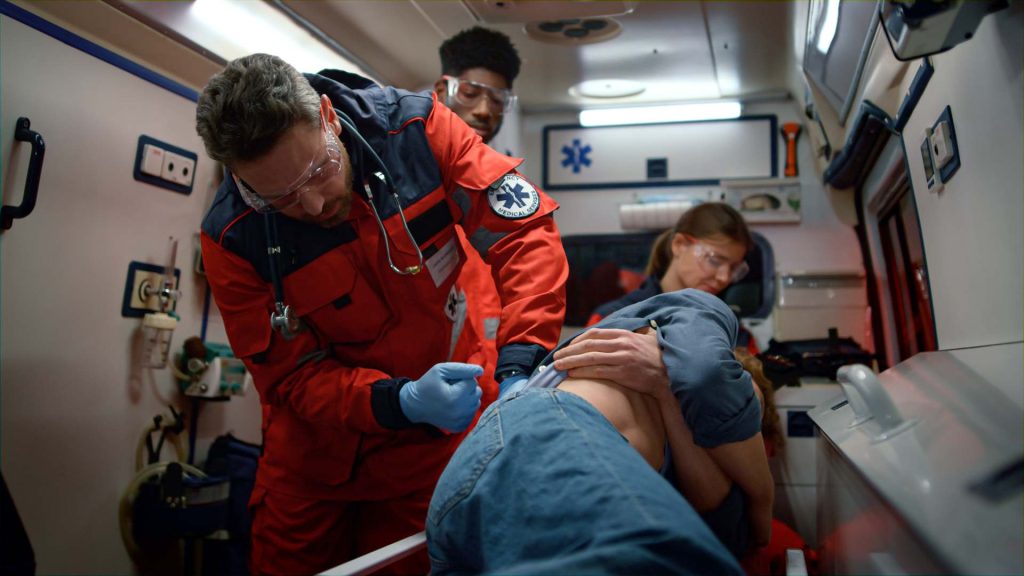Puede que las lesiones del manguito rotador no sean algo con lo que estés familiarizado personalmente, pero son bastante frecuentes. El hombro es una articulación compleja que necesita poder moverse como una pelota en una cavidad para realizar desde tareas cotidianas hasta hazañas extraordinarias que sólo realizan los atletas de talento.
Las lesiones de hombro pueden ocurrirle a cualquiera, aunque las más traumáticas suelen producirse en el contexto de una actividad física intensa, como los acontecimientos deportivos. Si te has lesionado el manguito rotador, es probable que necesites acudir a un especialista en ortopedia.
Hay dos tipos comunes de lesiones del manguito rotador. La menos frecuente es el desgarro. Los tendones o músculos del hombro pueden desgarrarse como consecuencia de un traumatismo. El pinzamiento del manguito de los rotadores es la lesión que se produce con mayor frecuencia y puede ocurrir cada vez que el manguito de los rotadores se inflama y, como consecuencia, se pinza o se acalambra.
Obviamente, en caso de lesión de este tipo, debe buscarse la atención médica adecuada, dependiendo de la gravedad del incidente y de la lesión resultante. A menudo, las lesiones del manguito rotador pueden curarse sin necesidad de intervención quirúrgica.
En la mayoría de los casos, la persona lesionada debe seguir el protocolo RICE para tratar la lesión y aliviar el dolor. Esto significa DESCANSAR todo el brazo, HIELAR el hombro, COMPRIMIR la zona lesionada y ELEVAR el brazo para reducir la hinchazón.
Una vez que el método RICE haya tenido tiempo de reducir la inflamación general y aliviar parte del dolor, puede que estés preparado para intentar algunos estiramientos y ejercicios que devolverán el hombro a la normalidad de forma eficaz y eficiente.
Aquí tienes varios estiramientos que te ayudarán en tu recuperación tras una lesión del manguito rotador.
Estiramiento de la cortadora de césped
Este estiramiento debe su nombre a que imita el aspecto y la sensación de arrancar un cortacésped tirando de una banda de resistencia. Coloca la banda debajo del pie opuesto a tu hombro lesionado. Tirarás con la mano del brazo del hombro lesionado desde aproximadamente la altura de la rodilla opuesta. Continúa el movimiento de tracción hacia arriba y gira el cuerpo mientras lo haces. La banda debe estirarse hasta el hombro que ha sufrido la lesión. Repite este estiramiento en repeticiones de 10 durante 2-3 series.
Estiramiento con mosca invertida
Con los pies apoyados en el suelo a la anchura de los hombros y la espalda ligeramente doblada hacia delante por la cintura, levanta dos pesas ligeras (una en cada mano) hasta que los brazos formen una T con el cuerpo. Vuelve a colocar las pesas a los lados, justo delante de las rodillas. Por la salud de tu hombro lesionado, no intentes levantar los brazos por encima de la altura de los hombros. Repite este estiramiento durante 2-3 series de 10 repeticiones.
Estiramiento de la puerta
Quizá el más sencillo de los estiramientos de hombro que recomienda nuestro equipo de especialistas ortopédicos sea el estiramiento de puerta. Puede ser un excelente estiramiento para empezar o terminar un entrenamiento, ya que tiene un efecto definitivo de calentamiento/enfriamiento en los hombros, tanto lesionados como sanos.
Coloca las manos a cada lado del marco de una puerta, con cuidado de hacerlo a la altura de los hombros o por debajo (no queremos sobreextender el hombro lesionado). Inclínate ligeramente hacia delante y luego da pasos, alternándolos si quieres, para permitir que los músculos del hombro se estiren con el movimiento de los pasos.
Estiramiento de filas altas/bajas
Sujeta la banda de resistencia a una fuente aérea fiable, de modo que puedas tirar de ella sin que la banda se suelte y provoque una lesión mayor. Toma una rodilla, asegurándote de que la rodilla del lado de tu hombro lesionado es la que descansa en el suelo. Coloca la mano contraria sobre la rodilla levantada y agarra la banda de resistencia con la mano del brazo lesionado. Tira hacia abajo sin torcer el brazo. Lleva el codo hacia la sección media del cuerpo y repite este ejercicio durante 2-3 series de 10 repeticiones.
Estiramiento de rotación lateral
Túmbate sobre el lado no lesionado y deja que el codo del brazo lesionado descanse sobre tu cintura. Tu mano y antebrazo caerán sobre tu estómago. ¡Aquí es donde tu mancuerna es útil! Coge la pesa y levántala en un ángulo de noventa grados desde el suelo hacia la cintura. Devuelve la pesa al suelo, y repite este estiramiento durante 10 repeticiones 2-3 veces.
Si necesitas más asistencia médica de un especialista en ortopedia, llama hoy mismo a los médicos de Ortopedia AICA. Hemos tratado muchas lesiones del manguito rotador y tenemos muchos más ejercicios para ayudarte a sentirte mejor más rápidamente. Ponte en contacto con nosotros hoy mismo para concertar tu cita.





